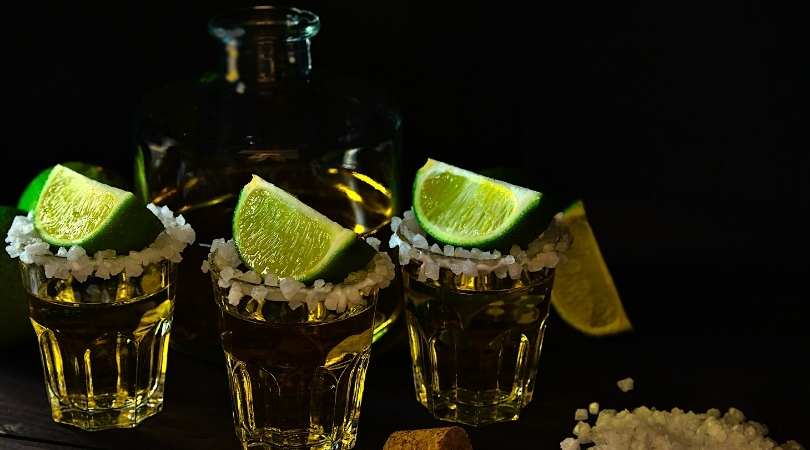How the Best Tequila Starts in the Soil: The SWOL Agave Advantage
August 4, 2025
Pull up a chair, pour yourself a neat, well, pour! Get ready to drink in some of the knowledge we have on the best tequila. When we talk about great spirits, discussions often center on aging or distillation. But the true secret to a smooth sip begins in the earth.
The high-mineral volcanic soils of Jalisco feed Blue Weber agave plants with nutrients that become sweetness, structure, and depth in every bottle of agave tequila, hence why it’s the most popular region that makes the spirit. But states like Guanajuato, Michoacán, Nayarit, and Tamaulipas all produce tequila as well. Why does this matter?
Let’s explore why agave tequila’s journey from ground to glass matters more than you might think.
Is Tequila Made From Agave?
At its core, tequila is simply distilled agave. True agave tequila must come entirely from the blue agave plant. It’s not just a name you can slap on a bottle. If you have ever wondered, is tequila made from agave or mixed with cane sugars? Well, the answer is that only 100% agave expressions deliver pure agave flavor.
Let’s simplify. Tequila, at the very minimum, must be made from at least 51% blue agave and be produced within designated regions of Mexico (remember the five we mentioned earlier?). Once a drink is made elsewhere, it can’t be called or labelled tequila. And it’s just any agave - tequila must be made with blue agave to be classified as such.
Check Out - What Makes Tequila “Authentic”? A First-Timer’s Guide to Real Agave Spirits
We Swear by the Soil
Tequila’s flavor story begins long before any agave heart meets a copper still. In fact, it starts beneath your feet.
The red volcanic soils of Jalisco, for instance, brim with iron, magnesium, and potassium. These are minerals that agave roots absorb as they draw water and nutrients. When piñas grow in high-mineral ground, their sugars develop more complexity, quietly layering honeyed agave notes with subtle hints of earth and spice in the finished spirit.
As one can guess, not all agave soils are created equal. Beyond minerals and texture, soil health itself drives quality. Microbial diversity (bacteria, fungi, and soil fauna) breaks down organic matter and makes nutrients bioavailable, strengthening agave against pests and disease.
Farmers who rotate cover crops, minimize chemical inputs, and monitor pH keep soils alive, ensuring each new agave generation thrives. Well-tended earth also supports consistent sugar levels, leading to cleaner fermentations and more reliable distillations. In tequila, as in wine, terroir means sense of place, and that begins in the soil.
How Tequila Farming Affects the Spirit
By law, tequila must be made from one plant, and that’s the Blue Weber agave (Agave tequilana Weber Azul). This cultivar’s piñas contain 25 to 30% fermentable sugars at harvest, the highest of any agave species. If a spirit label doesn’t specify ‘100% agave’, you’re sipping a mixto, which is a blend that can dilute agave’s pure vegetal character with cane sugar or corn syrup.
Agave fields require patience: a new agave plant takes 7 to 10 years to mature before harvesting. Young offsets (called hijuelos) are either planted directly into sandy volcanic soil or grown in nurseries until they form robust roots. Farmers monitor soil pH, aiming for a neutral level around 7.0 to enable optimal nutrient uptake.
When an agave is ready, the jimador grabs a coa, a circular blade on a long handle, to strip the leaves and expose the piña. These hefty hearts can weigh between 50 and 100kg. Only the densest, sweetest piñas make the cut. This manual selection is vital because underripe cores lack fermentable sugars, while overripe ones can yield off-flavors.
Once harvested, piñas head to traditional brick ovens, known as hornos, where they steam for 36 to 48 hours. After cooling, the softened piñas are crushed in roller mills or tahonas (stone wheels), releasing aguamiel, the sweet agave juice that will ferment.
After copper pot distillation, time, temperature setting, and a few more finishing touches, you get agave tequila!
Also Read - Ancient Roots, Modern Spirit: A Look Into the Cultural Legacy of Tequila
Taste Terroir Itself with SWOL Tequila
When you understand how tequila is made from the ground up, every tasting becomes a lesson in geography, chemistry, and cultural heritage. Pour a small measure into a snifter and inhale. You might notice the soft mineral brilliance that lifts the fresh agave sweetness.
For enthusiasts who cherish depth and authenticity, SWOL Tequila offers more than just a drink. Savor it neat, swirl it in a wide glass, or swap it into aged cocktails that spotlight its botanical origin.


View more Blogs
Why Tequila Is the Ultimate Winter Spirit (Yes, Even for Christmas)
Discover why tequila isn’t just a summer drink—learn how this versatile spirit warms up winter celebrations, pairs perfectly with festive flavors, and elevates holiday cocktails, making it the ultimate choice for Christmas and beyond.
READ BLOGSmooth by Nature: The Science Behind SWOL’s Signature Flavor
Uncover the science behind SWOL’s signature flavor in Smooth by Nature. Explore how ingredient selection, brewing techniques, and natural processes create a perfectly balanced, smooth taste that keeps fans coming back sip after sip.
READ BLOG

